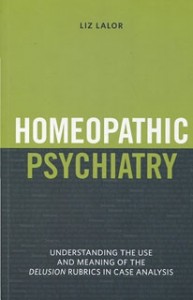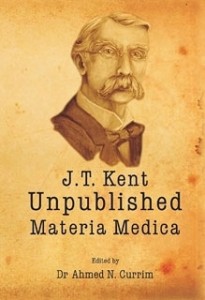After several queries, I have decided to write about the twenty most effective remedies that are regularly used for infants and children in homoeopathic practice. These are not ‘constitutional’ remedies (remedies for eradicating long-term problems or inherited tendencies) but those that are commonly used for acute problems and which every household with young children should stock.
This article is not meant to encourage home-prescribing, but to build up awareness about the great potential that homoeopathy has to solve most problems that children encounter; safely and gently, without the use of strong chemical drugs like antibiotics.
Nowadays, we see a lot of children in our practice that come with health problems that could easily have been avoided, had homoeopathy been resorted to in the first place. Instead, anxious parents, unknowingly, often compel their doctors to prescribe strong medicines like antibiotics even for routine coughs, colds and fevers. This way, the body’s own immunity does not adequately learn how to fight infections and hence the next rounds of infection come sooner and sooner. This leads to a vicious circle of infections and antibiotics with the child’s immunity taking a battering. As the child’s immunity continues to suffer, the child becomes more and more disposed to developing more serious infections and conditions like ear infections, chronic otitis media, tonsillitis, bronchitis and even bronchial asthma. Chronic ailments like skin allergies and eczema also become more common. These are usually considered as new ailments and never linked to the actual immunity lowering cause.
With correct homoeopathic prescribing, all the acute coughs, colds, fevers and even the more serious conditions like ear infections, chronic otitis media, tonsillitis, bronchitis and bronchial asthma can be treated well. Homoeopathic remedies stimulate the immune system to function optimally and, over time, the immunity improves and children’s own bodies are able to fight off most infections without the need for any medication. For such immunity-improving treatment, detailed constitutional therapy is essential – this requires a detailed case taking and proper case management. However, the list given below contains remedies often used for acute problems, from which, even at odd hours of the day or night, your homoeopath can choose the suitable remedy based on the symptoms present. Such a kit kept at home can be handy and valuable.
1. ACONITE
This is a remedy useful for the congestive stage of inflammation before localization takes place. Ailments arise from exposure to dry cold air, drafts of cold air especially when overheated. Ailments come on suddenly with intense symptoms. High fevers where the face is red or red and pale alternately. There is great thirst for large quantities of cold water, lot of restlessness and tossing about. Teething children may develop convulsions. Cough is dry, hoarse and croupy, more on expiration.
2. AETHUSA CYNAPIUM
Suited to children during dentition who develop complaints in hot summer weather, children who cannot tolerate milk. Milk is vomited in large curds as soon as it is taken, vomiting leads to intense weakness and drowsiness. The child sleeps and then wakes up hungry and crying, drinks milks again and the cycle repeats. The child’s face bears and expression of pain and anxiety.
3. ANTIMONIUM TART
Children with cough where there seems to be a large collection of mucus but nothing comes up. Child is clingy and wants to be carried but won’t let anyone else touch him. Vomiting that is followed by drowsiness and great weakness. Tongue is coated pasty, thick and white. Great inclination to sleep with nearly all complaints. Useful for children at birth who are pale, breathless and gasping; prevents asphyxia neonatorum. Most ailments seem to come on in damp weather or from living in damp rooms.
4. ARNICA MONTANA
Very useful for the falls and bumps that children get as a routine part of growing up. Prevents serious repercussions of head injuries and is known to absorb bleeding that has occurred into the brain after a head injury. Also useful for the bad effects of injuries received a long time ago. Useful also for mechanical blunt injuries that result in stupor from concussion with involuntary passage of stools and urine. Injuries bring on a sore, lame, bruised feeling, as if beaten. Whole body is oversensitive. Everything on which he lies feels very hard, keeps moving from place to place in search of a soft spot.
* Do not use Arnica ointment on any open wounds.
5. ARSENICUM ALBUM
For the start of colds with intense sneezing, watery nasal discharge and thirst for sips of cold water frequently. Fevers with restlessness where children want to be carried rapidly. Also useful for tummy upsets that result from cold food or drink or from eating bad meat. Nausea at the smell or sight of food, diarrhoea after eating or drinking, watery stools with great weakness.
6. BELLADONNA
Suited to children with great liability to catch colds; sensitive to drafts of air especially when uncovering the head or after a hair cut, tonsillitis after exposure to cold winds. Sudden onset of ailments with redness of face or eyes with most complaints. Tongue has a strawberry red appearance. Pulse is full and bounding, congestive headaches worse from slight noise, light, jar, movement; better by tight bandaging or pressure. Useful for convulsions during teething, with fever where the head is hot and the feet are cold. For children who get delirious with fever.
7. CALENDULA
One of the best antiseptic remedies in homoeopathy. Very useful for open wounds to promote healthy healing of tissue and prevent excessive pus formation. Useful as oral medicine as well as application of Calendula ointment on the wounds. Also for use post-surgically to promote rapid healing.
8. CHAMOMILLA
Useful for children – newborn and during the teething period. Ailments from cold, anger, dentition. Child is exceedingly irritable and fretful, quiet only when being carried. Impatient and demanding, rejecting the thing when given. Whining and moaning constantly. Intense pains (eg., ear pains) with great oversensitivity, one cheek red and hot, the other pale and cold. Great aversion to wind especially about the ears. Diarrhoea of teething infants where the stools are green, watery, like chopped eggs and spinach, hot and very offensive.
9. CINA
For complaints of children who are very irritable and cross, want to be carried but carrying gives no relief. They do not want to be touched and cannot bear anyone coming close. Constantly digging and boring at the nose. Worm complaints with startling and screaming during sleep and grinding of teeth.
10. COLOCYNTH
Very useful for abdominal colic. Agonising pains making the child bend double. Great restlessness, twisting and turning about for relief. Pains are better by hard pressure. Irritable and impatient, throwing things out of his hands.
11. FERRUM PHOS
Very useful for inflammatory conditions and fevers especially the first stages. Easy flushing of the face, less intense symptoms than of Aconite and Belladonna. Pulse is soft and flowing. Often useful in fevers of children when there are no other symptoms to guide to a suitable remedy.
12. IPECACUANHA
Also known as Ipecac, it is a very useful remedy for coughs of children that are dry, spasmodic and asthmatic. Breathlessness with wheezing. Cough that often results in gagging, retching and vomiting of white frothy phlegm. Most complaints are accompanied by nausea with profuse saliva and vomiting; vomiting without relief. Tongue is clean or slightly coated.
13. JALAPA
For the colic and diarrhoea of children where the children are good all day long but scream and are very restless and troublesome at night.
14. KALI MUR
A useful remedy to cut short colds right at the beginning, also useful for sub-acute inflammatory states. Stuffy colds with ear involvement. Greyish-white slimy coating of the tongue.
15. PODOPHYLLUM
Diarrhoea of children during teething and in hot weather, worse from eating and worse while being bathed or washed. Stools are profuse, painless, of varying colour, often yellow, watery and very offensive.
16. PULSATILLA
Commonly used for colds with yellow discharges, stuffed up noses where the symptoms are changing often. Most symptoms are better in open air and worse indoors. Absence of thirst with most complaints and indigestion from eating rich food. Tendency to styes and agglutination of eyes with yellow sticky discharges on waking.
17. RHEUM
Suitable for children, especially during dentition. Sour smell of the whole body, child smells sour even after washing. Children cry and toss about all night. Impatient, desires many things and cries, dislikes even favourite playthings. Constant sweat of scalp keeping the hair always wet.
18. RHUS TOX
For coughs and colds after getting wet that result in muscle pains and flu-like symptoms. Corners of the mouth are ulcerated with fever blisters around the mouth. Very useful for sprains and strains where symptoms are worse on initial movement and better by walking or continued motion.
19. SAMBUCUS NIGRA
For dry colds of infants where the nose is dry and completely blocked, preventing breathing and nursing. The child awakens suddenly, nearly suffocated and gasps for breath. Difficulty in breathing out. Suffocative coughs with crying children.
20. SENNA
Very useful in intestinal colics where the child seems full of wind. Clinically used most often for third-month-colic of infants.
Besides these twenty, many other remedies may be suitable to a given case, based on symptoms that individual children present. These are just some guidelines and I reiterate once more that it is best to consult your homoeopath for proper remedy selection and dosage, this will give safe, gentle and speedy results.

